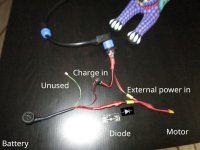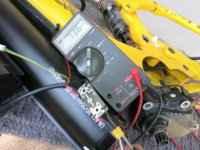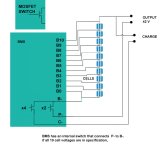Mike_Kelly
10 mW
I have a 36v 720wh battery that has been waiting to be installed for 8 months. So it reads 15v. I just noticed they sent me the wrong charger with it, so I can't charge it. I built a wiring hardness that allows for it and a external bottle battery with ideal diode for isolation. When I test the harness with a lab power supply. It works correctly. But when I hook it up the battery I get .7 volts out. When I measure at the input to the diode it is 1v. Something weird is going on with the fet in the diode or something with the BMS. Any thoughts would be helpful. Thanks in advance.






